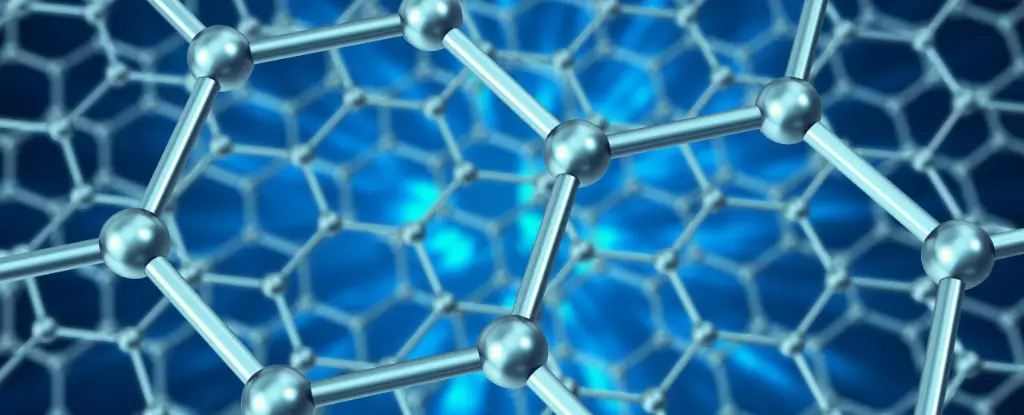In a groundbreaking study, researchers from notable institutions such as the University of British Columbia, the University of Washington, Johns Hopkins University, and the National Institute for Materials Science have unveiled a novel state of matter that expands our understanding of electron behavior in layered graphene. This discovery highlights the intricacies of carbon atoms arranged in a honeycomb lattice and the unusual phenomena that arise when these electrons navigate a complex landscape defined by twisted configurations. Such insights not only enrich theoretical physics but also pave the way for advancements in fields like quantum computing and superconductivity at room temperature.
Graphene has dazzled scientists since its isolation due to its exceptional electronic properties. This one-atom-thick material offers an ideal framework for investigating quantum behaviors, as its structure allows electrons to move with unparalleled mobility. The unique arrangement of electrons within the graphene lattice often leads to unexpected behaviors, making it a fertile ground for cutting-edge exploration in condensed matter physics.
The study’s central theme revolves around the phenomenon known as the moiré effect, a compelling optical illusion arising from the interference of two overlapping grids. In the case of the researchers’ experiments, they manipulated monolayers of graphene in a way that created this effect, which caused the individual carbon atoms to align in such a way that their electrical properties changed dramatically. This manipulation resulted in a reconfiguration of the electron’s trajectory within the graphene layers, leading to shifts in their speed and behavior.
Electrons being ‘frozen’ into a structured arrangement has long been understood in physics, typically characterized by the formation of what is known as a Wigner crystal. However, this new discovery portrays a more complex narrative regarding the electronic states under specific geometric conditions. The twisted graphene layers formed a topological electronic crystal, which not only maintained some of the orderly characteristics of a Wigner crystal but also allowed for efficient electrical conduction along its edges—a behavior counterintuitive in typical crystalline arrangements.
The implications of these findings are profound, especially concerning how electrons interact within constrained environments. The team, led by physicist Joshua Folk, asserts that while the electrons ‘freeze’ into a structured state similar to past observations, their ability to conduct electricity defies earlier understandings of how such structures ordinarily operate. This has piqued the interest of physicists, as it suggests that new types of electron behavior, which could lead to the discovery of new quasiparticles, may be waiting to be unveiled through further experimentation.
Furthermore, the phenomenon of quantization of resistance, exemplified by the quantum Hall effect, is a critical area that could benefit from this newfound understanding. These topological states have the potential to revolutionize quantum computing by producing qubits with enhanced stability compared to traditional approaches grounded in fundamental particles. As researchers continue to optimize and manipulate the configurations of graphene, the possibilities for innovative technological applications seem limitless.
The journey into this bizarre realm of electronic states doesn’t stop with the discovery of a new type of electron behavior. The researchers suggest that by further exploring intricate geometrical modifications, such as creating structures akin to Mӧbius strips, one might activate a “zoo” of quasiparticles, each exhibiting its own peculiar set of physical properties. This could lead to even more exotic states and applications in technology fields yet to be fully realized.
As the study of quantum materials continues to evolve, graphene remains at the forefront, offering a glimpse into a future where the boundaries of quantum mechanics and material science blur, leading to significant advancements in computing technologies, energy transmission, and beyond. The innovative research not only confirms existing predictions about electron behavior but also challenges us to reconsider the fundamental nature of matter and the surprising phenomena that arise from the elegant dance of carbon atoms in twisted configurations. The ongoing exploration of graphene’s potential will undoubtedly fuel scientific curiosity and inspire future breakthroughs for years to come.


Leave a Reply